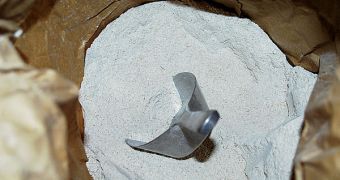As anyone who has ever cooked can tell you, adding a little bit of flour in a bowl of water yields a spectacular phenomenon. The fine particles in the powder quickly diverge from the spot where they were originally dropped, in a manner similar to that of an explosion. Explanations as to why this happens have eluded physicists for quite some time, but now expert Pushpendra Singh, PhD, a New Jersey Institute of Technology (NIJT) mechanical engineering professor, believes he may know the cause.
In addition to the presentation he will give to the Physical Society, the expert also published his research in the November 11 early edition of the journal Proceedings of the National Academy of Sciences (PNAS). The paper is entitled “Spontaneous Dispersion of Particles on Liquid Surfaces.”
Singh explains that the main “engine” behind the so-called explosions is something known as the repulsive hydrodynamic force. This force arises from the oscillation of the fine particles, and it represents the main thing that makes them disperse. The oscillations occur in any particles trapped in the air-liquid interface, at the surface of a fluid. They move up and down from their equilibrium position at all times. When this happens with many particles at the same time, the “explosive reaction” takes place, the scientist explains.
The reason why flour catches so much speed in water is the capillary force, which tends to pull the small particles to a position of equilibrium on the surface. “If a particle barely touches the interface, it is pulled onto the surface. For example, if the contact angle for a spherical particle is 90 degrees, it floats in the state of equilibrium so that one-half of it is above the surface and the remaining half is below. If the particle, however, is not in this position, the capillary force will force it to be,” Singh says.
The expert has also determined that smaller particles appear to be traveling a lot faster than larger ones, on the surface of liquids such as water. For example, viruses can reach top speeds of up to 167 kilometers (100 miles) per hour at the air-water interface. Singh adds that the small friction force (in this case, the resistance set forth by the water) is too little to prevent the particles “exploding.” He likens the set-up to the movement of a pendulum. “The pendulum will oscillate many times before friction makes it stop. If friction is too great, it won't oscillate,” he says.
“Let me explain more about viscous drag. When a body, such as a ball, moves through air or liquid, it will resist the motion. This resistance is caused by viscous drag. Or look at it this way. When a particle is adsorbed at a surface, it acquires a part of the released interfacial energy as kinetic energy. The particle dissipates this kinetic energy by oscillating from its equilibrium height in the interface. The act gives rise to repulsive hydrodynamic forces, the underlying cause of why particles disperse,” Singh concludes.

 14 DAY TRIAL //
14 DAY TRIAL //